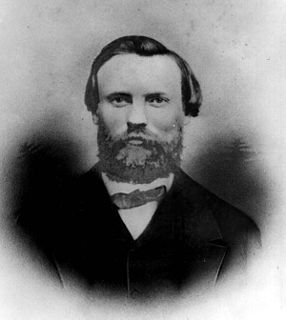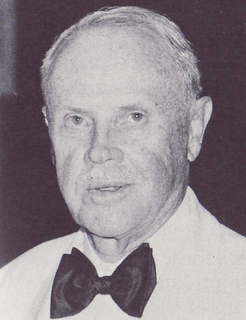George W. Hopkins was a lumberman involved in the removal of tens of thousands of acres of virgin forests in Michigan and Florida.
Hopkins was born in 1844 in Virginia. His father soon moved his family to Michigan in search of farm land. Hopkins became a surveyor and map maker at a young age, and then moved to Manistee, Michigan in search of work. Along with his brother David, wife Ella, and sister Martha, he commenced to start a brick manufacturing business in Manistee, and then soon found profit in the lumber business.
In 1873, the Hopkins family purchased the 88 acres (360,000 m2) of the current village of Bear Lake, Michigan. The Hopkins built a saw mill, a grist mill, several business buildings, platted the village, and built homes for themselves.
In the 1870s, Hopkins build a railroad, the Bear Lake & Eastern, which moved logs to the mill, and from the mill moved lumber to a pier five miles (8 km) to the west of Bear Lake, on Lake Michigan. The area there was named Pierport.
In 1902, all of virgin forests in the Bear Lake vicinity had been removed, and the saw mill was closed.
He had at least one daughter, named Agnes.
Hopkins' attention turned to Eau Gallie, Florida. where he had purchased over 10,000 acres (40 km2).
Eau Gallie is a section of the city of Melbourne, Florida, located on the city's northern side. It was an independent city in Brevard County from 1860 until 1969.
While commencing the lumber business in Florida, he completed a drainage canal in 1909, now called Hopkins Canal, along present day Aurora Road between Lake Washington and the Eau Gallie River. The general idea and location of a navigable canal near the Hopkins Canal was first proposed by William Henry Gleason in 1871. After passage of the Drainage District Act in 1913, George W. Hopkins organized a huge drainage project.

William Henry Gleason was an American politician from Florida. He was Florida's second Lieutenant Governor and was very briefly, acting Governor.
He founded the towns of Deer Park, Florida and Hopkins, Florida. Some books consider William H. Kempfer, his son-in-law, the founder of Deer Park. As of 2005, the Kempfer Sawmill still exists in Deer Park. He founded the Union Cypress Company in 1914. He died in 1925.

Deer Park is an unincorporated community in Osceola County, Florida, United States. It is located off US 192, south of the intersection with County Road 419. The community is part of the Orlando–Kissimmee Metropolitan Statistical Area.
Hopkins, also known as South Melbourne, is a former town in Brevard County, Florida, United States. It is part of the present-day city of Melbourne.
The Union Cypress Company operated a three-story double-band sawmill in Melbourne, Florida, built in 1912. The small company town of Hopkins, named after its owner George W. Hopkins, was built at the site. The company built a private railroad, often known as the Union Cypress Company Railroad, west from a connection with the Florida East Coast Railway in Melbourne across the St. Johns River to Deer Park. From there, where the logging operation was based, branch lines fanned out into the bald cypress swamps.











